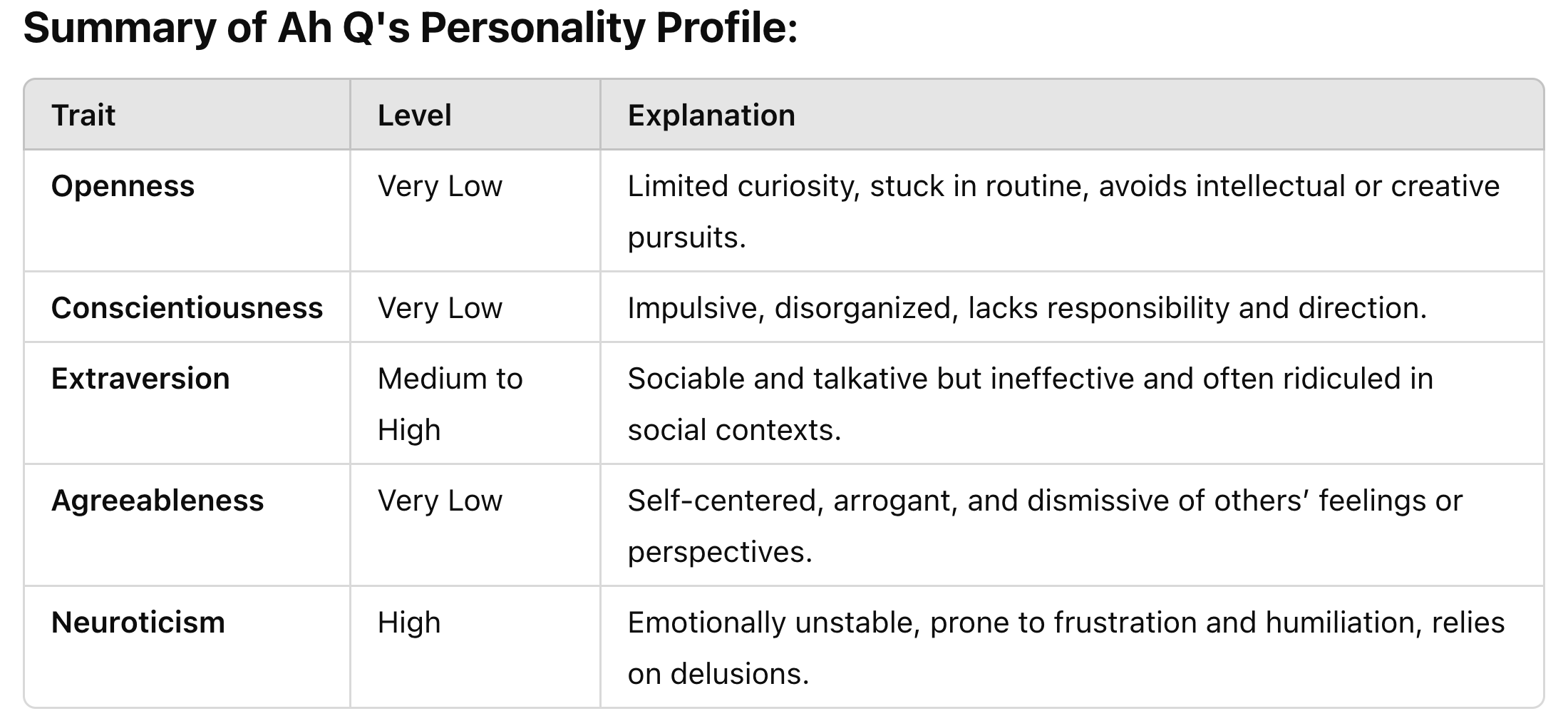Will Ah Q let it rot?
(in progress)
#letitrot #thetruestoryofahq #companionspecies
A ongoing self-commissioned project that lets me explore the wild emergent world of ai chatbot companions, friends, lovers and therapists. This is also foundational research work for current project proposals under development, as well as future projects and collaborations to come.
Genesis of the project
If Ah Q, on the verge of dropping out and fully embracing the "let it rot" philosophy, were to interact with modern AI companion bots, how might those conversations unfold? Would the AI companions, trained to empathize, motivate, or problem-solve, be able to sway Ah Q’s deeply ingrained fatalism? Or would they, too, fail to disrupt his downward spiral?
I have been deeply intrigued by the Chinese youth movement known as "Tang Ping" (躺平), often translated as "lying flat," and its more recent, more radical offshoot, "Bai Lan" (摆烂), which loosely means "let it rot." This philosophy represents a rejection of relentless societal pressures and an embrace of disillusionment, non-conformity, and, at times, quiet resignation. While exploring this phenomenon, I realized that my own optimistic outlook might limit my ability to fully grasp the essence of this mindset.
In my pursuit of understanding how contemporary AI companions are evolving and their potential to engage with complex human emotions, I sought a point of departure—a way to connect this modern technological development to the raw, human experience of despair, passivity, and discontent. I turned to literature and discovered a character whose mental characteristics resonated deeply with the "let it rot" ethos: Ah Q, from Lu Xun’s seminal 1920s novella The True Story of Ah Q.
Ah Q embodies a mix of hopeless pessimism, self-delusion, and a resigned acceptance of his fate that mirrors the mindset often attributed to those in the "let it rot" movement. He is a flawed, tragic, and at times comical figure who resigns himself to defeat with peculiar mental gymnastics. This made him an ideal candidate for a thought experiment:
Methodology
Through this project, I aim to explore the intersection of past and present—juxtaposing the mindset of a character like Ah Q with the capabilities of contemporary AI companions. By imagining these interactions, I hope to illuminate not just the challenges of addressing despair with technology, but also the broader implications of pairing advanced AI with deeply human struggles like those expressed by the "let it rot" movement. Ultimately, I ask: Can these interactions lead to transformation, or will they simply reinforce Ah Q’s resignation?
I began by using AI to construct a mental model of Ah Q’s personality based on the five-factor OCEAN personality model. This framework defined Ah Q’s traits systematically, helping ensure that his interactions with AI companions were approached with consistency and authenticity, rather than being influenced by my own biases. The model also allowed for a benchmark comparison against the personalities and emotional tones projected by the AI companions, highlighting whether their responses leaned toward optimism, pragmatism, or indifference, and how these aligned—or clashed—with Ah Q’s pessimism and resignation.
With this personality model in place, I am conducting conversational experiments with various AI companions, simulating Ah Q’s mindset as someone on the verge of "letting it rot." These interactions aim to explore whether the AI can offer meaningful support or disrupt his hopelessness. At the same time, I grapple with the paradox inherent in this setup: the philosophy of "let it rot" revolves around avoiding action altogether, including engaging with an AI companion. This tension creates a unique opportunity to test the limits of these technologies in addressing individuals who resist intervention or change.
This methodology provides an ongoing way to examine both Ah Q’s psyche and the capabilities and limitations of AI companions in responding to deeply ingrained despair and detachment.
Ah Q’s personality
Personality of Ah Q as generated by an AI, based on the OCEAN, or five factor, model.

AI companions in use
At the moment,mimicking the above personality profile of Ah Q, I am having conversations with the following ai chatbots :
Wysa - a leading therapy ai based in Bangalore, India with customers the world over.
Ahead - an emotion-coach ai, new on the scene, which claims to be a ‘duolingo for emotion’.
Replika, the controversial and infamous O.G. of this space that refuses to die.
Character AI, a popular Google funded chatbot service
Establishing a ‘theory of mind’ of the ai
From A Q’s perspective, one of the foundations from the outset for a meaningful and beneficial interaction with the ai would be for him to establish a ‘theory of mind’ of the technology. One that would help him trust it, and begin to let it into his emotive and personal space of vulnerability from where he could open up and begin to really entrust to the bot his more private thoughts, fears and doubts. The various ai I am working with approach this is different ways.
In the following snippet of conversation, notice how for instance Ah Q’s deep seated nihilism and skeptical outlook on the world makes him question the ai’s legitimacy - and and the ai’s counter strategy to gain such legitimacy.












